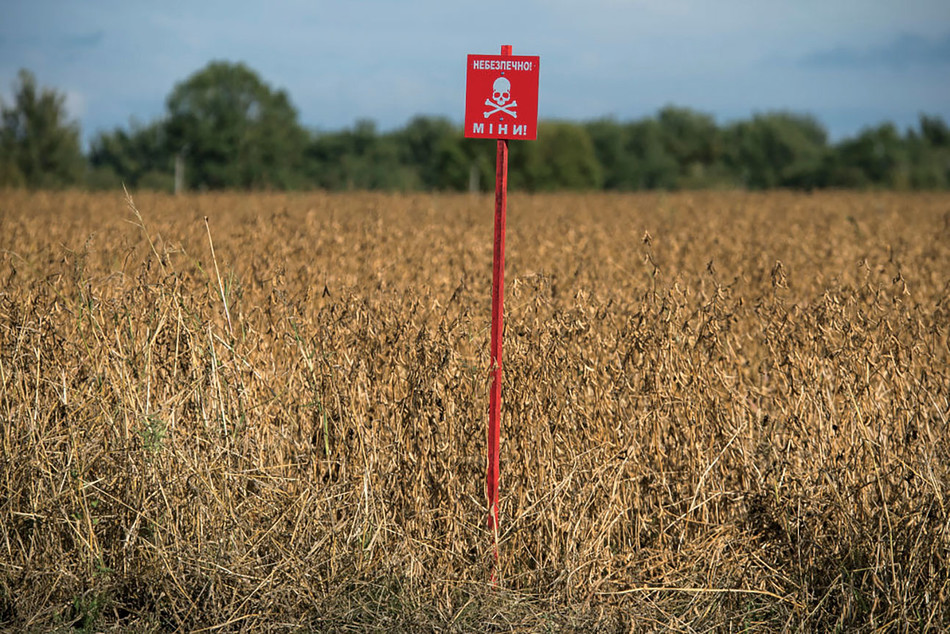More than one hundred million land mines, booby traps, and other unexploded ordnance lurk in present and former war zones, killing or maiming thousands of civilians a year, many of them children. And while humanitarian agencies are constantly working to clear such threats, their efforts are insufficient to the task, in part because they rely on manual methods that are time-consuming, expensive, and treacherous. Bomb technicians must sweep the ground with metal detectors and poke around in the dirt, a process that inevitably churns up more nails, spent bullet casings, and bits of shrapnel than live munitions. And tragically, for every five thousand mines recovered, three workers are injured or killed, according to the United Nations.
Enter Jasper Baur, a Columbia PhD candidate who is studying volcanology. He believes that the same tools that he and other earth scientists use to monitor volcanoes and lava flows — drone-mounted imaging systems and artificial intelligence — can be adapted to locate land mines faster and more safely. For years, he has spent his free time developing specialized remote-sensing technologies that, when mounted to drones and flown over minefields, can quickly detect buried or partially concealed explosives. In one recent paper, he and colleagues from Binghamton University showed that an airborne system that they designed to spot one of the world’s most widespread and feared antipersonnel mines — the Russian-made PFM-1 — performs faster than human teams and with 90 percent accuracy. It works by sensing temperature differences between the land mine and the surrounding soil and vegetation.
“The idea is to map out an area and determine where the hazards are before anyone steps into the minefield,” says Baur. “This could enable demining teams to cover more ground faster, while preventing injuries.”
Baur’s drones have attracted the attention of organizations that oversee demining operations, including the United Nations, although they have not yet been deployed in the field. But this past summer, Baur and his design partner, the computer scientist Gabriel Steinberg, traveled to Ukraine to answer a UN call for demonstrations of new mine-detection technologies. In a five-hour trial held at a military training ground northeast of the capital, their drones successfully identified a wide range of antitank mines, grenades, and projectiles that were scattered across a sixty-acre bushy expanse.
Today Baur and Steinberg, along with colleagues at Binghamton, the University of Maryland, and Oklahoma State, are fine-tuning their techniques in the hopes of soon helping humanitarian demining crews around the world. Baur and Steinberg, who met as undergraduates at Binghamton, have also founded a nonprofit organization — the Demining Research Community — that supports other scientists interested in developing mine-clearing tools.
Baur says that his team’s recent trip to Ukraine gave the researchers a renewed sense of urgency, since approximately one-third of that country is now littered with land mines and unexploded armaments. “There are farmers pulling missiles out of their fields with tractors and trying to clear land mines themselves,” he says. “They need our help.”



